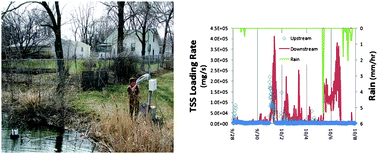A comparison of total maximum daily load (TMDL) calculations in urban streams using near real-time and periodic sampling data†
Abstract
A network of in situ sensors and

* Corresponding authors
a
Department of Civil Engineering, University of Minnesota, 500 Pillsbury Dr. SE, Minneapolis, MN, USA
E-mail:
arnol032@umn.edu
b Water Resources Science Program, University of Minnesota, 1985 Buford Avenue, St. Paul, MN, USA
A network of in situ sensors and

 Please wait while we load your content...
Something went wrong. Try again?
Please wait while we load your content...
Something went wrong. Try again?
M. B. Henjum, R. M. Hozalski, C. R. Wennen, P. J. Novak and W. A. Arnold, J. Environ. Monit., 2010, 12, 234 DOI: 10.1039/B912990A
To request permission to reproduce material from this article, please go to the Copyright Clearance Center request page.
If you are an author contributing to an RSC publication, you do not need to request permission provided correct acknowledgement is given.
If you are the author of this article, you do not need to request permission to reproduce figures and diagrams provided correct acknowledgement is given. If you want to reproduce the whole article in a third-party publication (excluding your thesis/dissertation for which permission is not required) please go to the Copyright Clearance Center request page.
Read more about how to correctly acknowledge RSC content.
 Fetching data from CrossRef.
Fetching data from CrossRef.
This may take some time to load.
Loading related content
